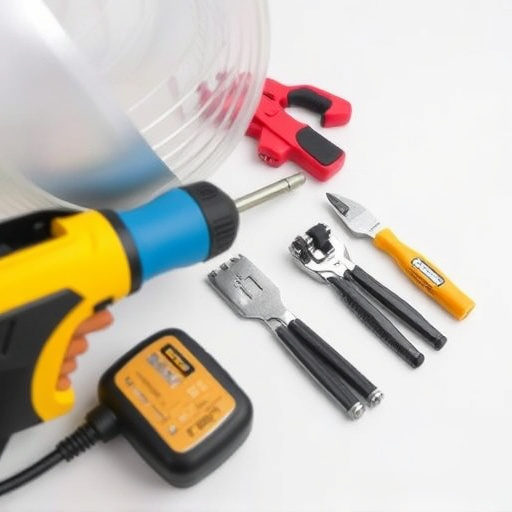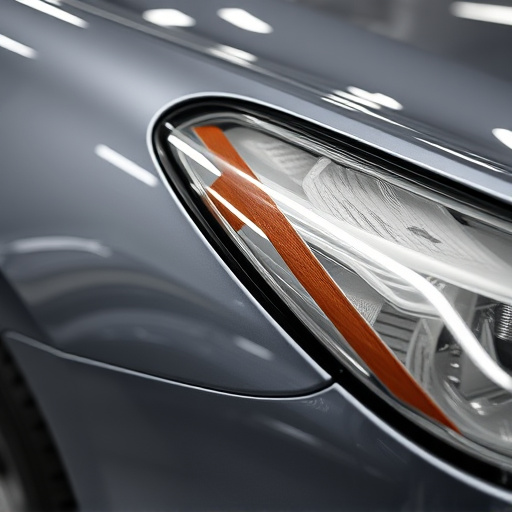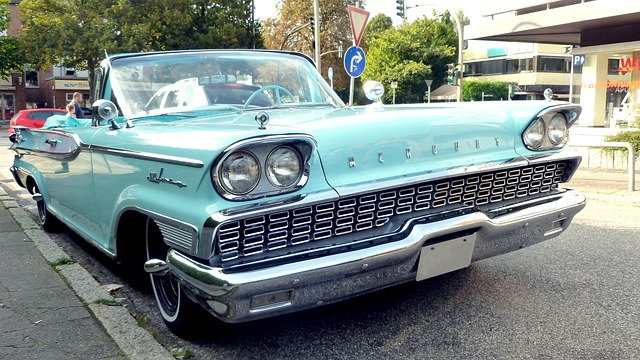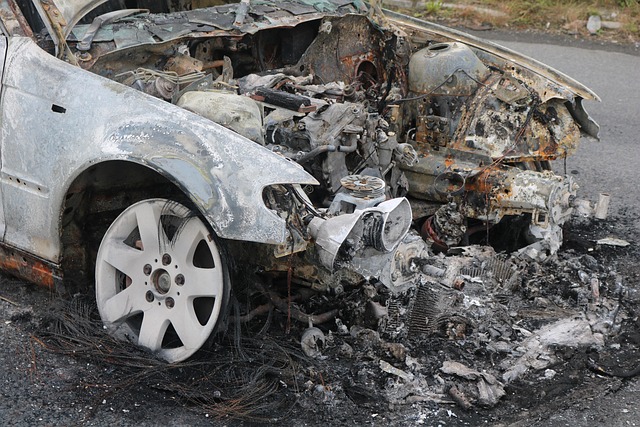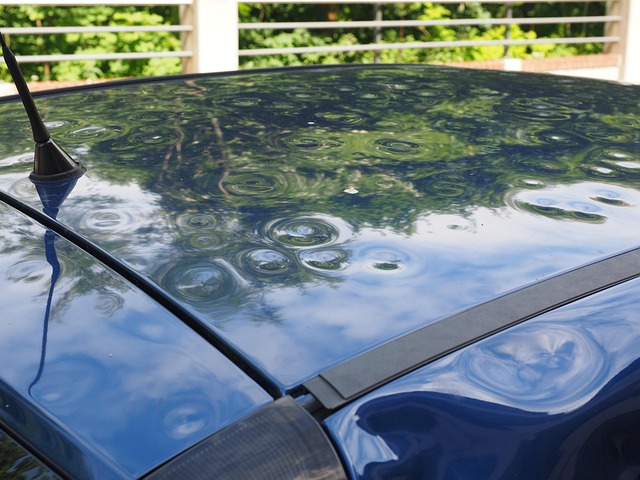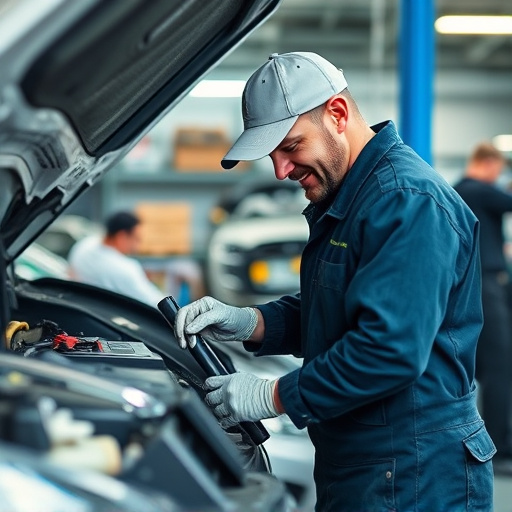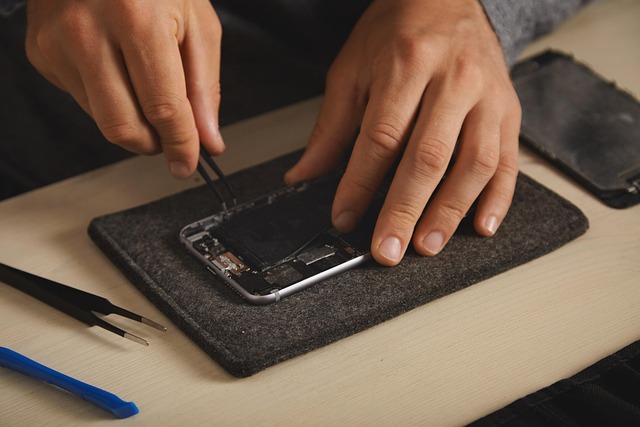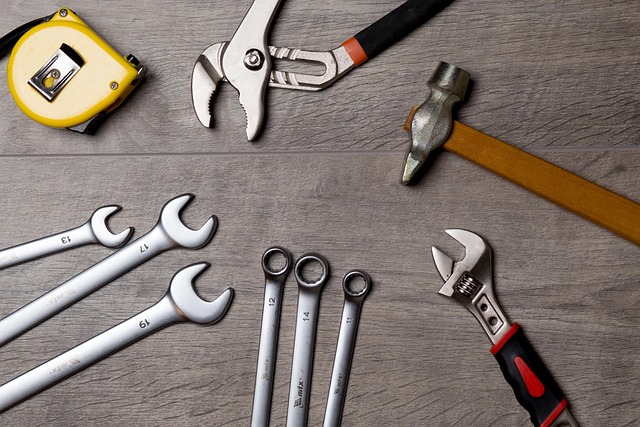The rise of electric cars drives a shift in car body repair, focusing on preserving efficiency and using advanced, eco-friendly techniques like precision welding and automated painting to reduce waste. Specialized skills and tools cater to unique EVs features, such as lightweight materials and intricate electrical systems, extending part lifespans and encouraging recyclable materials. This trend promotes sustainability, reduces emissions, and sets new standards for vehicle restoration, marking a game-changer in the auto industry with unprecedented efficiency and innovation.
Electric car body repair has revolutionized the auto industry, introducing advanced techniques that prioritize efficiency and sustainability. Unlike traditional methods, these innovative repairs minimize waste and emissions, aligning with the growing demand for greener mobility solutions. As the market shifts towards electric vehicles (EVs), the adoption of eco-friendly repair practices is reshaping the future of the industry. This article explores these transformations, delving into specific techniques, environmental benefits, and their impact on shaping the decade ahead.
- Revolutionizing Auto Care: Electric Car Body Repair Techniques
- Environmental Impact: Greener Repair Methods Transform Industry
- Future of Mobility: How Electric Repairs Shape the Next Decade
Revolutionizing Auto Care: Electric Car Body Repair Techniques
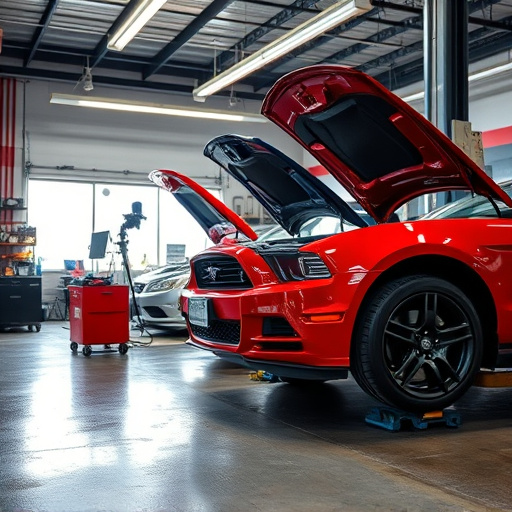
The advent of electric cars has brought about a significant shift in the auto industry, and one area that has revolutionized is car body repair. Traditional methods used for gas-powered vehicles are being reevaluated and adapted to cater to the unique needs of electric vehicles (EVs). Electric car body repair techniques focus on preserving the integrity and efficiency of these advanced machines, ensuring they return to their optimal state after an accident or collision.
This process involves specialized skills and tools that can address specific challenges posed by EVs, such as lightweight materials and complex electrical systems. The goal is not just to restore the vehicle to its pre-accident condition but also to maintain or enhance its performance and range. With the increasing popularity of electric vehicles, car body repair shops are now equipped with advanced equipment and trained personnel dedicated to handling these specialized repairs, elevating the standards of vehicle restoration across the industry.
Environmental Impact: Greener Repair Methods Transform Industry
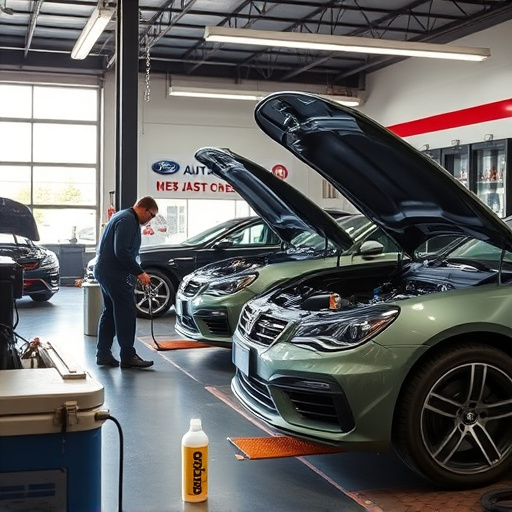
The advent of electric car body repair has brought about a significant shift in the automotive industry’s environmental footprint. Traditional car repairs often relied on intensive processes that generated substantial waste and emitted harmful pollutants. However, electric car body repair offers a more sustainable approach. Advanced techniques like precision welding, automated painting systems, and eco-friendly materials reduce the carbon footprint associated with repairs. For instance, electric car body shops can minimize the need for heavy machinery and toxic chemicals commonly used in conventional garages, leading to cleaner air and less contaminated water.
This greening of repair methods is not just about reducing emissions; it’s a holistic transformation. Electric car owners can now access specialized services like tire services, dent repair, and fender repair that adhere to environmental best practices. These greener repair techniques not only preserve the life of vehicles but also contribute to a circular economy by extending the lifespan of auto parts, diverting waste from landfills, and promoting the use of recyclable materials. As the electric vehicle market continues to grow, these sustainable practices are poised to become the new standard in the industry.
Future of Mobility: How Electric Repairs Shape the Next Decade

The future of mobility is electric, and this shift is not just reflected in the growing number of electric vehicles (EVs) on the road but also in how we approach their repair and maintenance. Electric car body repair is revolutionizing the auto industry, setting a new standard for efficiency, sustainability, and innovation. As we move into the next decade, the impact of this transformation will become increasingly evident.
With advancements in technology, electric car body repair shops are now equipped to handle complex repairs with precision and speed. The integration of automated systems and specialized tools allows for more accurate and consistent results, reducing the time and cost associated with traditional methods. Moreover, the focus on sustainability extends beyond the vehicles themselves; repair facilities are adopting eco-friendly practices, minimizing waste, and promoting the use of recycled materials, aligning with the industry’s commitment to a greener future. This trend sets the stage for a new era in automotive restoration, where classic car restoration meets modern technology, ensuring that both vintage and electric vehicles receive the care they deserve.
Electric car body repair has not only revolutionized auto care but also driven significant changes across the industry. By adopting greener repair methods, the automotive sector is reducing its environmental footprint while fostering innovation in mobility. As we look ahead to the next decade, the ongoing evolution of electric car body repair techniques will continue to shape a more sustainable and efficient future for all transportation sectors.
